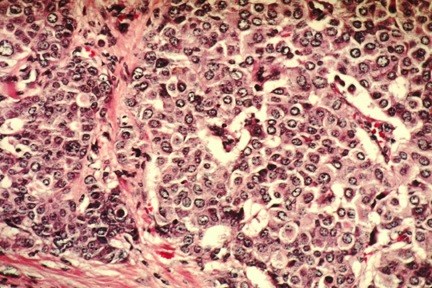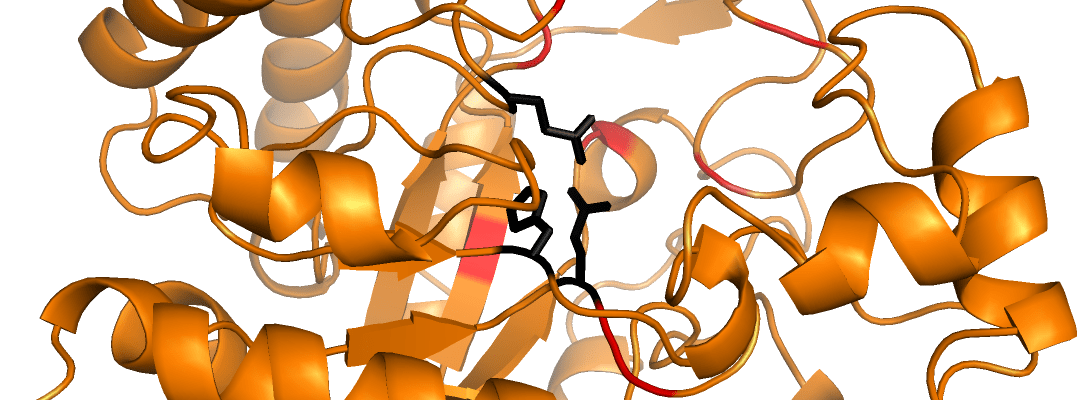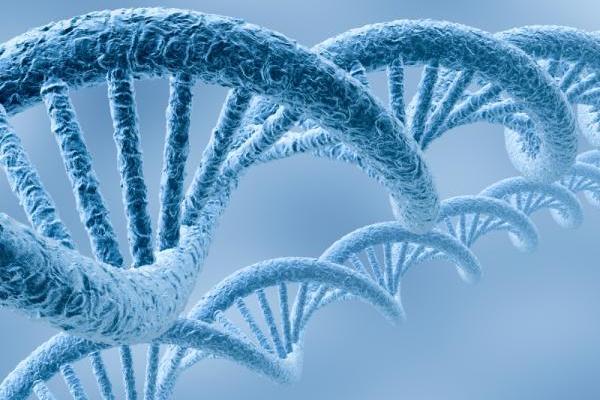|
By Alex Bernstein
In the late 1950’s, few doctors thought to take blood and urine samples for future use in long-term studies. Yet, that is exactly what Jacob Yerushalmy, a UC Berkeley biostatistics professor, began to do. These early blood samples were carefully frozen and stored with the hope to aid researchers in the future. Over the years, similar samples were collected from the daughters and granddaughters of the original patients. Today, all of these samples are stored at the university’s brand new biorespitory campus where eager scientists enjoy unprecedented research opportunities. Nina Holland, a professor at the school and the director of the biorespitory center, points out just how important this study is. She explains, “The fact that you can go back 50 years is remarkable. This is probably one of the most valuable studies.” Initiated in 1959, the Child Health and Development Studies project has closely monitored the health of over 15,000 daughters, mothers, and granddaughters in the San Francisco Bay Area in an attempt to determine the influence of environmental exposure on breast cancer incidence. It has long been suggested that epigenetic factors, such as alcohol and tobacco, play a significant role in breast cancer development in addition to one’s genetic predisposition. Yet, the shocking findings of this five-decade study reveal that the connection between the environment and breast cancer development is even more profound than was thought before. Although a startling one in eight US women develops breast cancer over the course of her life, disturbingly little is known about the causes of the disease as genetic factors are estimated to only account for about 5-10% of cases. The unique scope and length of the study is beginning to reveal important and unexpected results. Early findings are indicating that a child’s exposure to various chemicals while still in the womb can play a much larger role in her development and risk for cancer than was previously considered. Already, the 100,000 blood samples are beginning to provide insight into the fundamental paradox of breast cancer: Why do so many women without any apparent genetic predisposition develop breast cancer? Researchers such as project director Barbara Cohn theorize that the answer lies in the detected environmental pollutants (many of which have already been banned) that were found in the blood sample. The theory is that early exposure to estrogen and other hormone impersonating chemicals increases the chance of breast cancer development. Such a hypothesis appears to be confirmed by the 50-year study as the risk of breast cancer tripled for women who were exposed to various PCB’s (polychlorinated biphenyl, known to be persistent organic pollutants). Reproductive toxicologist Suzanne Fenton explains that this link has yet to be identified in previous studies because “they measured levels of chemicals in women later in life, after they were diagnosed with cancer, not during periods when the breast is most susceptible.” Although thorough research has yet to be completed, these early findings have already begun to make a big splash in the research community. By the time this study is complete, not only will we know that much more about breast cancer, but also about the importance and impacts of our everyday environment.
0 Comments
By Nate Posey
Science fiction is a curious genre. Each and every written work has a certain level of time dependence with regards to its relevance; the biting social commentaries and polemics of one age become the quaint, historical oddities of the next, the groundbreaking scientific paper steadily fossilizes into the bedrock of canonical knowledge, and even the nominally timeless classics receive new meaning through the lens of contemporary mores. But science fiction is different. The modern reader, swept ever further downstream by the flow of time, still feels that, with enough historical diligence, the proper context of even the most ancient of works can be recovered, that if they peer closely enough, they can see Achilles the way he appeared to the ancient Greeks. The context may have drifted, but it is not lost entirely. For yesteryear’s speculative fiction, however, the context has been positively eradicated. As author John Crowley phrased it in a recent essay titled “The Next Future”: Science fiction shares methods and modes with other genres—boy’s adventure, gothic tale, fable, satirical allegory, philosophical romance—but from the beginning it gained extraliterary power from its prediction of actual marvels that were sure to come sooner or later. No other fiction, not even the tales of Darkest Africa or polar exploration, had that. Unlike its sister genre of fantasy, science fiction requires only a disingenuous suspension of disbelief, for even though a story’s fantastic technologies and events have not yet unfolded, they very well still could. It is this element of possibility, the source of science fiction’s “extraliterary power,” that simply cannot be recovered. While examining yesterday’s future today can be most amusing (as I hope it has been), nothing quite compares to the analysis of yesterday’s future yesterday. Let’s take a look, shall we? A canvas view of present day Paris.The notion of an actual science fiction genre has been exceedingly fluid over the years, but most historians nevertheless recognize Jules Verne as the progenitor of the craft. Coming of age during the great industrial rebirth of France between 1848 and 1870, Verne seized on the dizzying pace of technological advance as a vessel for speculative fiction, a view of a future substantially different than the present. Naturally, all fiction is first and foremost a form of art, and, indeed, most of the master’s best known works are remembered more for their gripping narratives and characters than for their predictive prowess, but this was not the case with one of his earliest works. Written in 1863 but never published until 1994, Paris in the Twentieth Century represents perhaps the most diagrammatic and predictive of Verne’s novels. The book follows the exploits of the young Michel Dufrénoy as he struggles to realize his artistic passions within the extravagantly mechanized technocracy of 1960’s Paris. Many of Verne’s predictions are not without a degree of prescience; his description of the streets of modern Paris is in fact imminently recognizable: What would one of our ancestors have said upon seeing these boulevards lit as brightly as by the sun, these thousand carriages circulating noiselessly on the silent asphalt of the streets, these stores as sumptuous as palaces… these glittering trains, which seemed to furrow the air with fantastic speed (26). However, the reader loses considerable faith in Verne’s crystal ball due to several glaring anachronisms. The upper class of Verne’s 1960’s Paris is waited on hand and foot by an entourage of butlers and servants, and the clerks of the prestigious Casmodage and Co. Bank still scribble down account figures with feather quills. More than anything, however, the modern reader will find the entire feel of Verne’s envisioned future, a world without war, without news, and utterly without passion, positively alien compared to the actual tenor of the 1960’s. Of course, the dedicated individual might still try to scour the periodicals of 1863 and screw up his eyes to catch a glimpse of Verne’s vision in its proper light, but the exercise would be one of futility. For all that can be learned of the work’s native context, the intervening history can never be unlearned, and Paris in the Twentieth Century will forevermore be yesterday’s future yesterday. By Ian MacArthur
A new synthetic peptide may hold the key to curing some of mankind’s most tenacious illnesses. Researchers at the University of Texas Southwestern Medical Center led by Dr. Beth Levine recently synthesized Tat-beclin 1, a molecule that shows promise as a means of developing treatments against cancer, infectious disease, and degenerative neurological disorders. Peptides differ from proteins on the basis of size. Although both are comprised of amino acid chains, peptides are classified as chains numbering 50 or fewer amino acids. Tat-beclin 1 is a 31 amino acid peptide whose demonstrated therapeutic value lies in its ability to induce the cellular process of autophagy. Autophagy is the process by which cells recycle valuable components of large biological molecules to be reused in the synthesis of new molecules. Enzymes help to degrade unused compounds within the cell and then aid in constructing new compounds from the individual recycled components. The process is essential for the maintenance of cellular health as well as the ability of cells to combat various diseases. To study the effects of the peptide on disease resistance, Dr. Levine’s team treated mice with Tat-beclin 1 before infecting them with the West Nile virus and the insect-borne illness chikungunya. The mice treated with the peptide demonstrated increased resistance to such illnesses. Additionally, the team reported that human cells treated with Tat-beclin 1 in vitro were resistant to HIV. The effectiveness of the peptide against HIV in vivo remains to be tested. The Levine group derived the amino acid sequence for Tat-beclin 1 from beclin 1, a protein previously identified by Dr. Levine to be crucial in autophagy. Subsequent research has identified defects in beclin 1 to underlie many types of diseases, and corroborated the importance of autophagy in defending the body against cancer. The disruption of autophagy has been linked to a variety of human health conditions. Besides the onset of infectious disease, autophagy inhibition has been demonstrated to play a role in aging, breast, lung, and ovarian cancer, and degenerative neurological conditions such as Parkinson’s and Alzheimer’s. Thus, the potential for Tat-beclin 1 to be developed into therapeutic agents to combat these maladies is immense. In studies of the effects of beclin 1 expression on Parkinson’s and Lewy body disease, researchers indicated that heightened beclin 1 levels coincided with the degradation of α-synuclein, the protein whose cellular buildup is closely associated with these disorders. It stands to reason, then, that the use of Tat-beclin 1 as a stand-in for heightened beclin 1 expression might yield a similar result. Although the initial laboratory results of Tat-beclin 1 have yet to be reproduced on a clinical scale, the initial success of the peptide will surely precipitate a host of new drugs that may undergo testing in clinical trials. It is still too early to say whether or not Tat-belclin 1 truly holds the key to health, but the lessons learned from the peptide and its significance in autophagy will surely prove invaluable in future thinking about the treatment of illness. By Emma Meyers
We live in world of color. As children, we quickly learn that the sky is blue and the grass is green. We drive our cars, directed by colored lights. They can affect our moods, excite or relax us, and allow us to express ourselves through art, clothing, and décor. Colors are so central to our culture that they’ve come to take on meanings beyond their aesthetics: pure white, green with envy, red states and blue states. We perceive colors with specially adapted photoreceptor cells in our retinas called cones. There are three types of cone cells (from which the name for our ability to see color – trichromatic vision –is derived), and each is tuned to detect light in a specific range of wavelengths: long, with sensitivity peaking at red light; medium, tuned to green light; and short, which respond best to blue light. The one million (yes, million!) colors we are capable of seeing each correspond to different combinations of cone activation in response to light. Often, men (and, occasionally, women) who are colorblind have a genetic abnormality that results in the lack of one of the three types of cones. With only two cones, the full range of light wavelengths are not detected, and fewer combinations of activation lead to fewer perceived colors. If fewer cones mean fewer colors, what if we possessed a fourth cone? Would an extra photoreceptor give its lucky possessor superhuman, super-color vision? It turns out this might actually be the case. Scientists lead by Gabrielle Jordan at Newcastle University in England long hypothesized the theoretical likelihood of a four-coned human, or tetrachromat, walking among us. In addition to the red, green, and blue cones we all possess, a tetrachromat would also have a cone that has its peak sensitivity tuned to orange light. The extra cone would increase the tetrachromat’s color perception capacity to about 100 million hues – colors that most of us cannot even conceive of would be common shades in her world. Tetrachromacy would only be possible in women, the Newcastle group explained in an article in Discover Magazine published in the summer of 2012. Genes for the red and green cones are both located on the X chromosome, so while men who inherit an X chromosome with a mutated cone gene are colorblind, women, who have two X chromosomes, may be able to use the same mutant gene along with her three working cones to see an array of colors we can’t begin to understand. And it’s not as rare a condition as you might think – given the prevalency of colorblindness in men, Jordan estimates that as many as 12% of women might be tetrachromats. Despite this high estimate, though, finding a true tetrachromat to study has proven difficult. Though Jordan and her colleagues identified women with four cones, none showed any signs of tetrachromacy in subtle color discrimination tasks. While they finally did find one veritable tetrachromat, she was the only one out of 25 four-coned women tested to see any unique colors. Though additional tetrachromats have been identified, none are able to explain how their world might look different from ours. Adding to the obvious lack of vocabulary is the simple fact that we have designed our world of trichromatic color vision, so any tetrachromatic benefit, aesthetic or otherwise, might not be manifest in our man-made, trichromatic daily lives. University of Washington vision researcher Jay Neitz suggests that this might also be why the other 24 women with four cones Jordan tested were not true tetrachromats: there’s just not enough color variation available for tetrachormats to tap into their abilities. Until we gain more understanding though, we mere trichromats must be content with the world as we see it, even while knowing there is a kaleidoscopic array of colors within colors that we can’t imagine hidden from us in plain sight. (I couldn’t find an online tetrachromacy test, but to test your own color perception abilities, try this game!) By Ian MacArthur
“So long as men can breathe, or eyes can see, so long lives this, and this gives life to thee.” With these words, Shakespeare concludes Sonnet 18, a defiant charge against the finality of a lover’s death by way of literary immortality. Though the Bard had placed hope in written English to perpetuate the memory of his love, its ultimate preservation may be made possible by biological molecules. Scientists Nick Goldman and Ewan Birney of the European Bioinformatics Institute have devised a way to encode information into a DNA sequence. Among the first pieces of information to be translated into genetic code were all of Shakespeare’s 154 sonnets, Martin Luther King Jr.’s “I Have a Dream” speech, and Francis Crick and James Watson’s research paper describing the double helical structure of the DNA molecule. Voluminous in written form, the information when translated into DNA weighs less than a millionth of a gram. DNA is an incredibly efficient way to store information. Requiring no energy to maintain, DNA can be preserved for thousands of years in cold, dark environments, giving it an incredible advantage over the energetically costly digital hard drives that occupy an immensely greater amount of space. When asked how much space would be required to store the totality of humanity’s information in DNA, Dr. Goldman replied that it could be done in one and a half cubic meters. “So it would sort of go in the back of your station wagon, I guess,” he added. The key to genetic storage lies in translating information into the four nucleotide bases – A, C, G, and T – that comprise a DNA sequence. In much the same way that computers use binary, a sequence of 0’s and 1’s, to store digital information, the scientists were able to code information into DNA bases. Every eight digits of binary code were translated into five letters of DNA, with the result being a systematic way of translating information into genetic code. With this method, English letters received their own five nucleotide sequence. The letter T, for example, appears as TAGAT. After translating Shakespeare, King, Crick, and Watson into their new code and contracting an American corporation to synthesize the appropriate DNA, Goldman and Birney were able to sequence the code and successfully obtain the original information. The entirety of the DNA appeared as a miniscule speck suspended in a test tube. Despite the clear advantages provided by DNA as a means to storing information, biological hard drives are not yet economically feasible to be put to use commercially. “At the moment, it’s so expensive that it’s only economically viable if you’re going to store it for 600 or more than 1,000 years,” stated Dr. Goldman. However, Dr. Birney noted that if the price of DNA sequencing were to experience a similar 100-fold drop in cost as it has over the last fifty years, DNA storage could be economical for preserving information over a fifty year period. As a final reassurance of DNA’s merit, Dr. Goldman dispelled any ideas about the potential biological danger of storing information genetically. “The code we use to store information in DNA is completely different from the codes that living organisms on Earth use in their DNA,” he said. “So it’s no more dangerous to have the information stored in DNA that way than a piece of plastic’s dangerous because you can make a CD out of it.” |
Categories
All
Archives
April 2024
|





